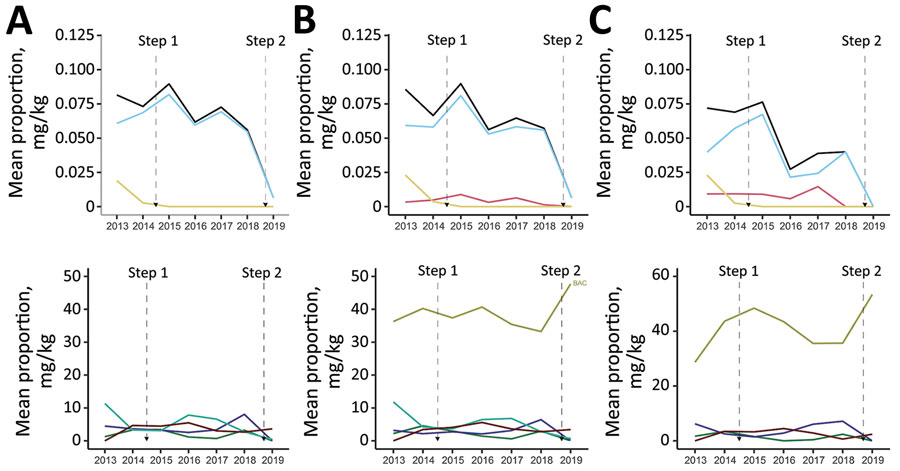Volume 27, Number 9—September 2021
Research
Reduction in Antimicrobial Use and Resistance to Salmonella, Campylobacter, and Escherichia coli in Broiler Chickens, Canada, 2013–2019
Figure 4

Figure 4. Mean antimicrobial use administered in ovo or subcutaneously at broiler chicken hatcheries or through feed, by isolation of bacterial species, Canada, 2013–2019. A) Salmonella; B) Escherichia coli; C) Campylobacter. Route of administration in each panel: top, in ovo or subcutaneous injections; bottom, feed. Mean antimicrobial use is color coded: lincosamides, in light blue; overall, in black; third-generation cephalosporins, in yellow; orthosomycins, in brown; penicillins, in purple; streptomycin, in cyan; and macrolides, in green. Antimicrobials are represented only if significantly (p<0.05) changing over time. The antimicrobial use trend through water is not represented because no statistically significant differences were found.